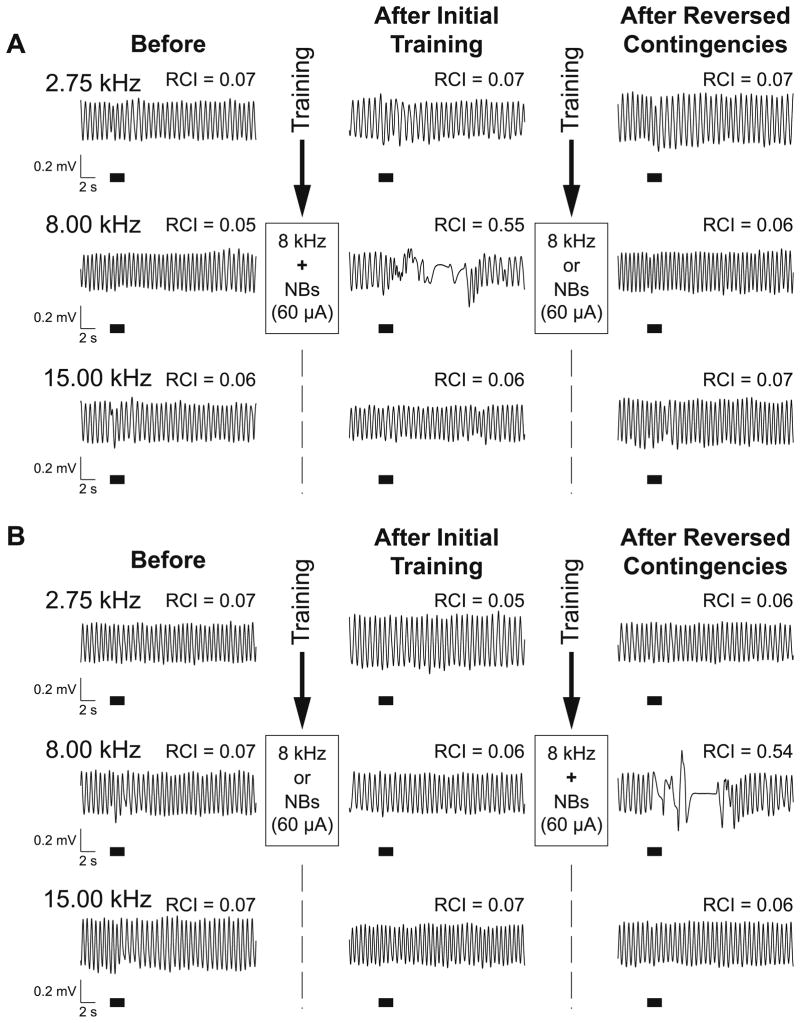Fig. 2.
Effects of the tone and NBstm presentations on behavioral memory in the IP and IU groups following training. (A) Examples of respiratory waveforms obtained from the subject in the IP group. Shown are baseline responses to the CS (8.00 kHz) and a lower (2.75 kHz) and higher (15.00 kHz) frequency during Day 2 (left column, “Before”), Day 4, 24 h post-training (middle column, “After Initial Training”), and Day 6, 24 h post-second-training (right column, “After Reversed Contingencies”). RCI values indicate the averaged (over the 13-s post-stimulus onset) quantified effect of tone on respiration. Before training, responses to all three frequencies were minimal (RCI = 0.05–0.07). After initial training (paired), the CS frequency produced a large disruption of respiration (RCI = 0.55) while not changing responses to lower (RCI = 0.07) and higher (RCI = 0.06) frequencies thus indicating specific associative learning. Following re-training (unpaired), responses to all three frequencies returned to the pre-training baseline levels (RCI = 0.06–0.07) thus supporting the conclusion that the effects of the previous learning were erased. (B) Examples of respiratory waveforms from a subject in the IU group. Similar to the IP group, responses before training were minimal (RCIs = 0.07). In contrast to the IP group, there was also a minimal response to the sideband and the CS frequencies 24 h after initial (unpaired) training (CS RCI = 0.06; lower sideband RCI = 0.05; higher sideband RCI = 0.07). However, the responses obtained 24 h following reversed contingencies training (paired) were quite different. While they still were minimal at both sidebands (RCI = 0.06), the response at the CS was strong (RCI = 0.54), comparable to the one obtained following initial paired training in the IP subject (see [A]). That suggests that any potential memory about the CS formed after unpaired training was overwritten and had no visible residual decremental effect on the formation of the new one. Note that both subjects had same level of NBstm (60 μA in both cases) during training. The thick horizontal bars indicate tone presentation.

